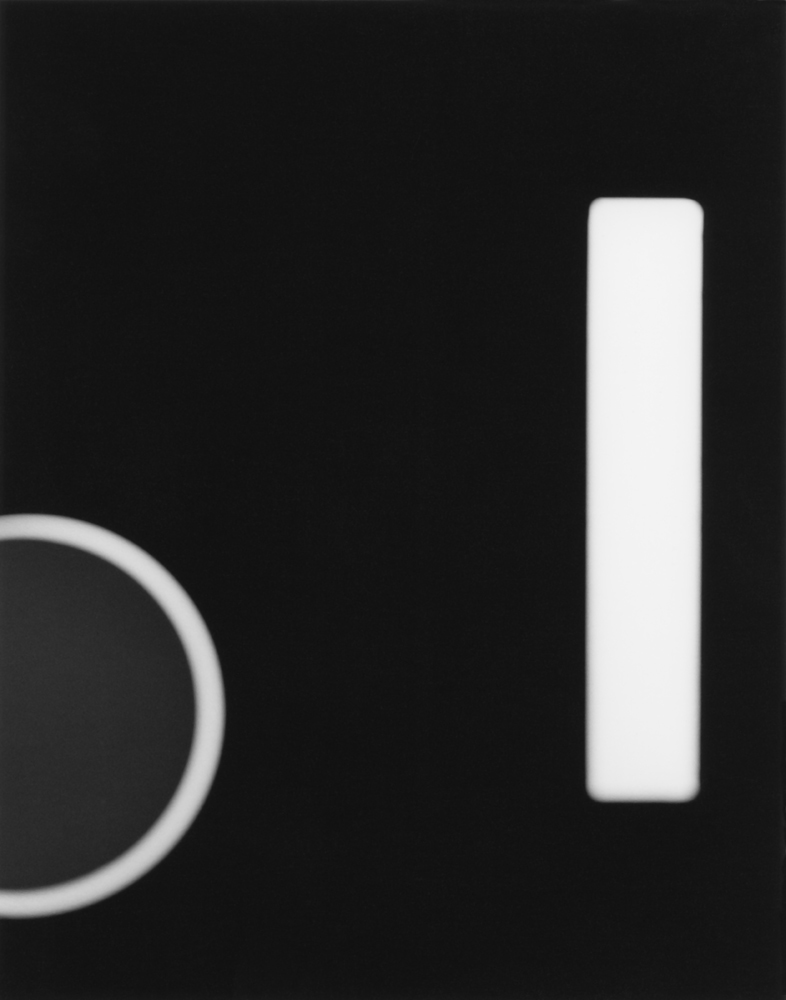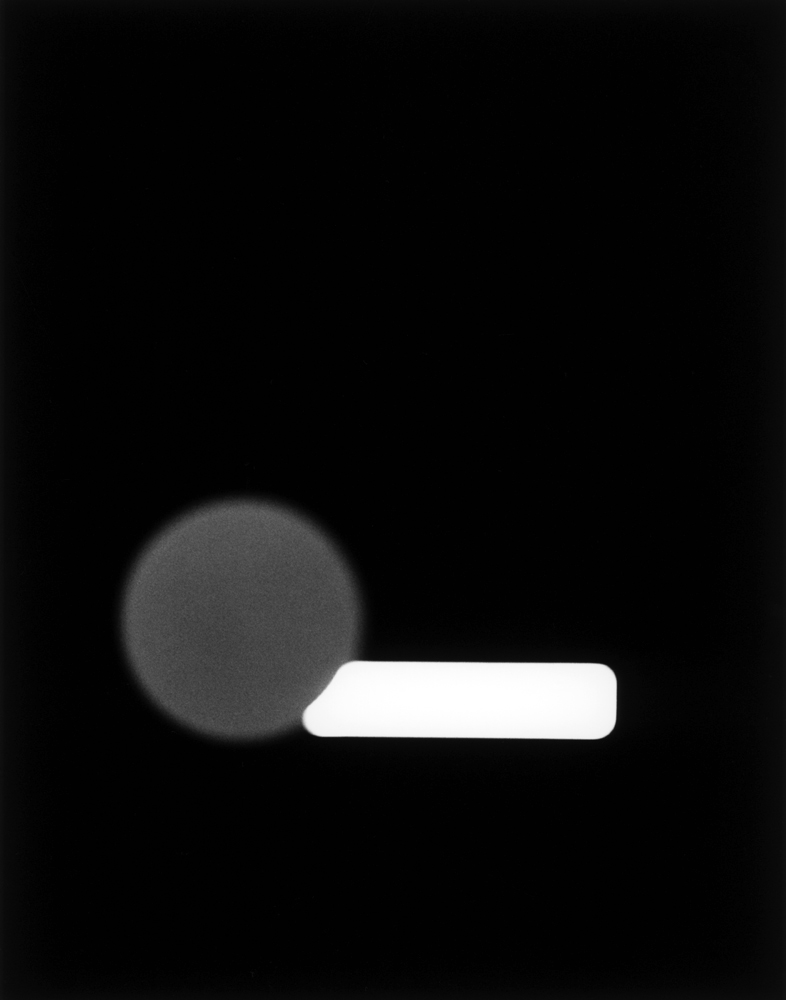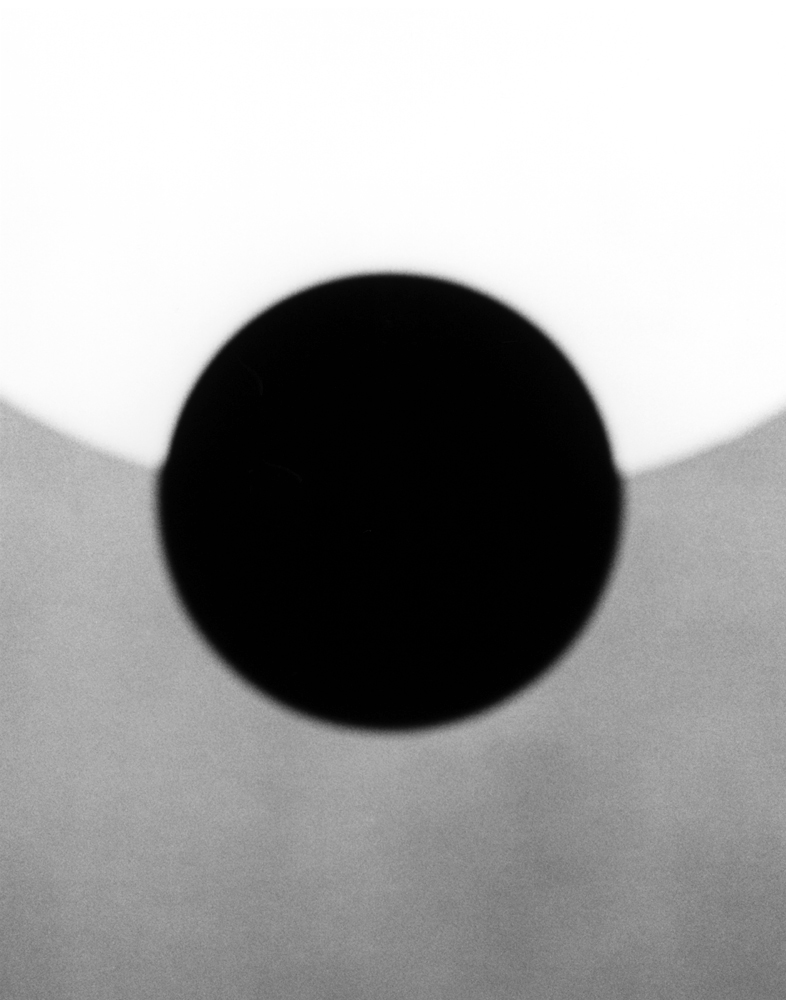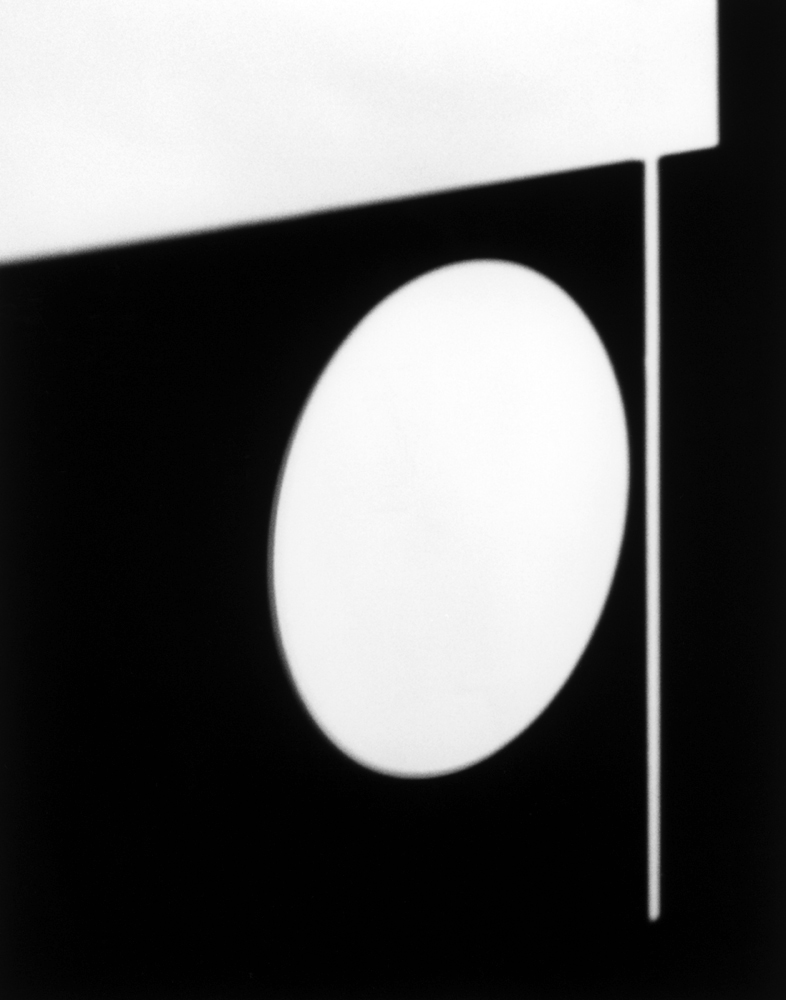ART + SCIENCE: Geometry: Philip Augustin
In Philip Augustin’s recent work entitled Studio Series: 2016-2017, he creates photographs that visually alter space. As the architect of his own constructions, the director of light and the conductor of his own experiments, he investigates the relationships between objects, spaces and tonal values.
Augustin uses a lens-based process, as opposed to placing objects on light sensitive paper during exposure without the use of a camera. He explains “…the softness of the shapes is achieved by radically defocusing the camera, not by the lighting. By radically defocusing the images in camera the negative records a defocused image at the moment of exposure.” The photographs reveal contrasted geometric shapes that are defined by black, white and tonal abstractions. Yet more than a study of geometry and optical physics, this series of work captures creative play. Beyond science and intellect, Studio Series: 2016-2017 transforms into “magic” which Augustin calls “…that instant when the intellectual, technical and intuitive merge and the image simply feels right – light or heavy, balanced or unbalance, playful or serious.”
Philip V. Augustin (b. 1960) lives and works in Santa Fe, New Mexico. Augustin’s work is currently featured in That Much Further West: Three Visions From New Mexico at the Paul Paletti Gallery, Louisville, Kentucky. His work has been featured in the New Mexico Museum of Art’s Alcoves 16/17 exhibitions, Space at the Griffin Museum, Winchester MA, PhotoBid Exhibition and Auction at the Phoenix Museum of Art, New Mexico Showcase at 516 Arts in Albuquerque and numerous exhibitions nationally.
Augustin is Contributing Faculty at Santa Fe University of Art and Design, has served as a Curatorial Consultant to the Georgia O’Keeffe Museum, Assistant Director of the Photography Department at the Oregon State Fair, member of the Board of Directors of Salem Art Association (Salem, OR) and President of the Board of Photo Arts Santa Fe. He has served as a juror for numerous exhibitions and is a frequent reviewer at the Society for Photographic Education’s national conventions.
Studio Series: 2016-2017
Studio Series: 2016-2017 refines my conception of blurring the firm boundaries of representational photography and reconsiders modernist ideas of photographic abstraction. This work is process-driven, informed by an academic interest in the history of photography. The imagery is created in conversation with the European avant-garde lineage of lens-based and lens-less abstract image making, in particular László Moholy-Nagy, Gottfried Jäger, and Barbara Kasten.
Aesthetically I regard these images as reductive rather than “minimal.” Using a limited tonal palette and bold primary forms, I create visually challenging geometric abstractions. My earlier series, Vanishing Point (2011-2014), used found architectural details as a starting point; Studio Series: 2016-2017 provides me greater creative freedom by using table-top constructions and having full control of lighting. One physical phenomenon I exploit in this work is the expansive and contractive tendency of adjacent tonalities; high-key (white) areas expand into low-key (black) areas. This phenomenon occurs in all photographic images; however, the viewer is rarely aware of it in a sharply focused, full-tone print because it occurs on a minute scale. By radically defocusing, using bold geometric shapes, and high contrast materials, the transition zones broaden and are readily visible. These active transition zones create a focal point attracting viewers attention due to the tonal gradation and film grain evident in them.
Some images in this series show strong signs of tonal expansion and contraction from both the original exposure and the printing process. Because my photographic printing is a negative process, the black areas of the print expand into the light areas. These conflicting phenomena create physical and optical illusions that underscore the non-representational qualities I seek. One other physical illusion that is readily apparent in many images is the rounding off of the 90° corners of rectangular forms due to the physics of light.
For me a successful image must work on multiple levels simultaneously, from theoretical to simple aesthetic enjoyment. My images are created without narrative intent. Regardless of the thought process and problem solving that brought them into being, my images are ultimately viewed through the viewer’s filter of experiences, prejudices and opinions.
Posts on Lenscratch may not be reproduced without the permission of the Lenscratch staff and the photographer.
Recommended
-
Earth Week: Hugh Kretschmer: Plastic “Waves”April 24th, 2024
-
Earth Week: Richard Lloyd Lewis: Abiogenesis, My Home, Our HomeApril 23rd, 2024
-
From Here to the Horizon: Photographs in Honor of Barry LopezApril 3rd, 2024
-
European Week: Kacper KowalskiMarch 4th, 2024
-
Debbie Fleming Caffery: In Light of EverythingFebruary 11th, 2024


































































